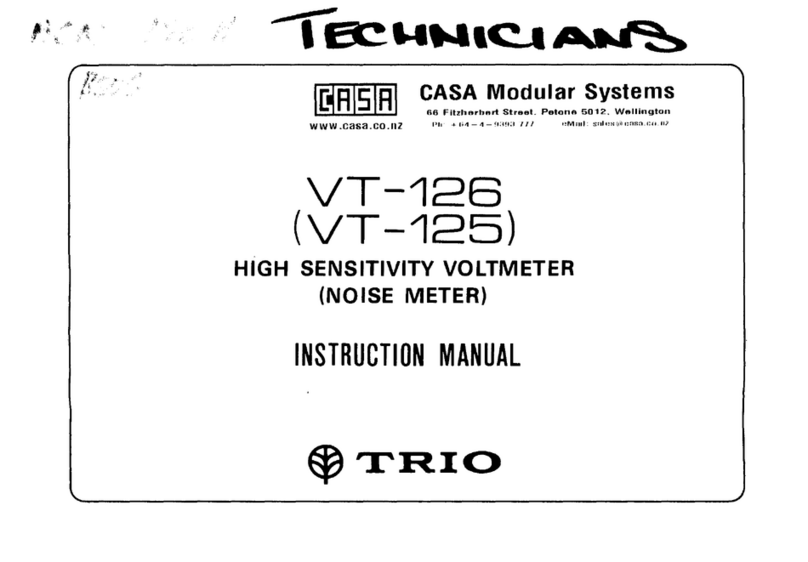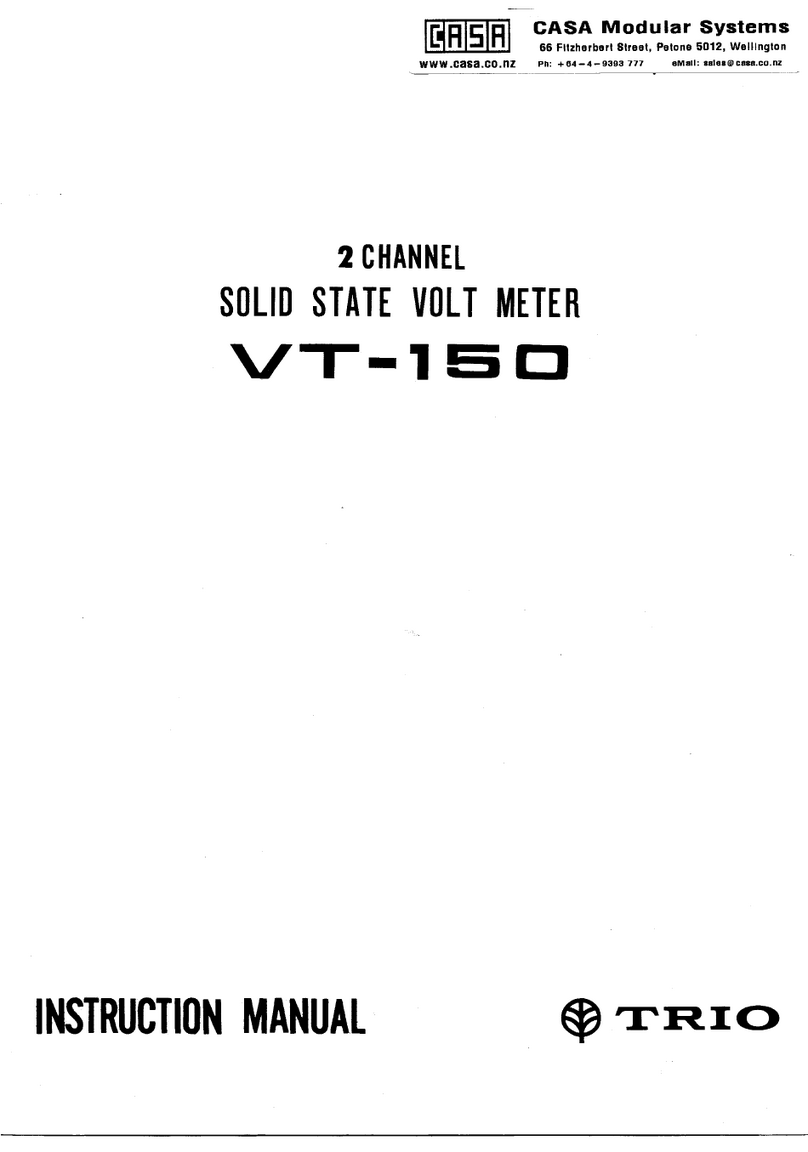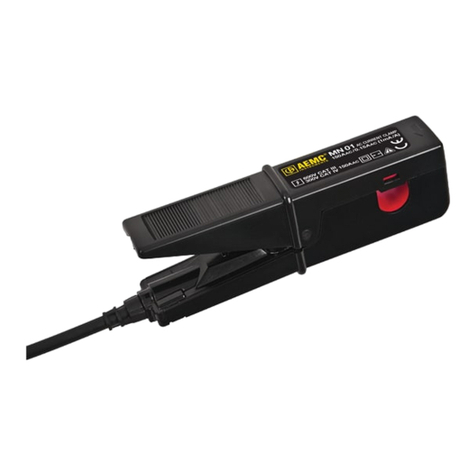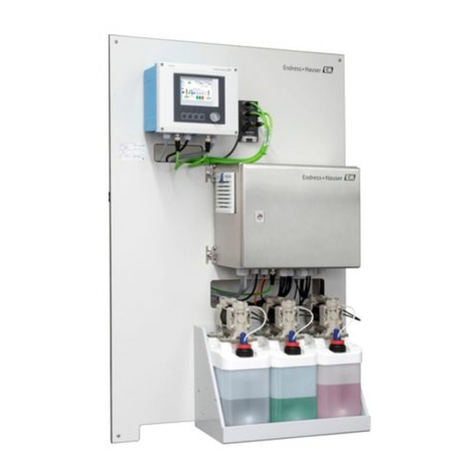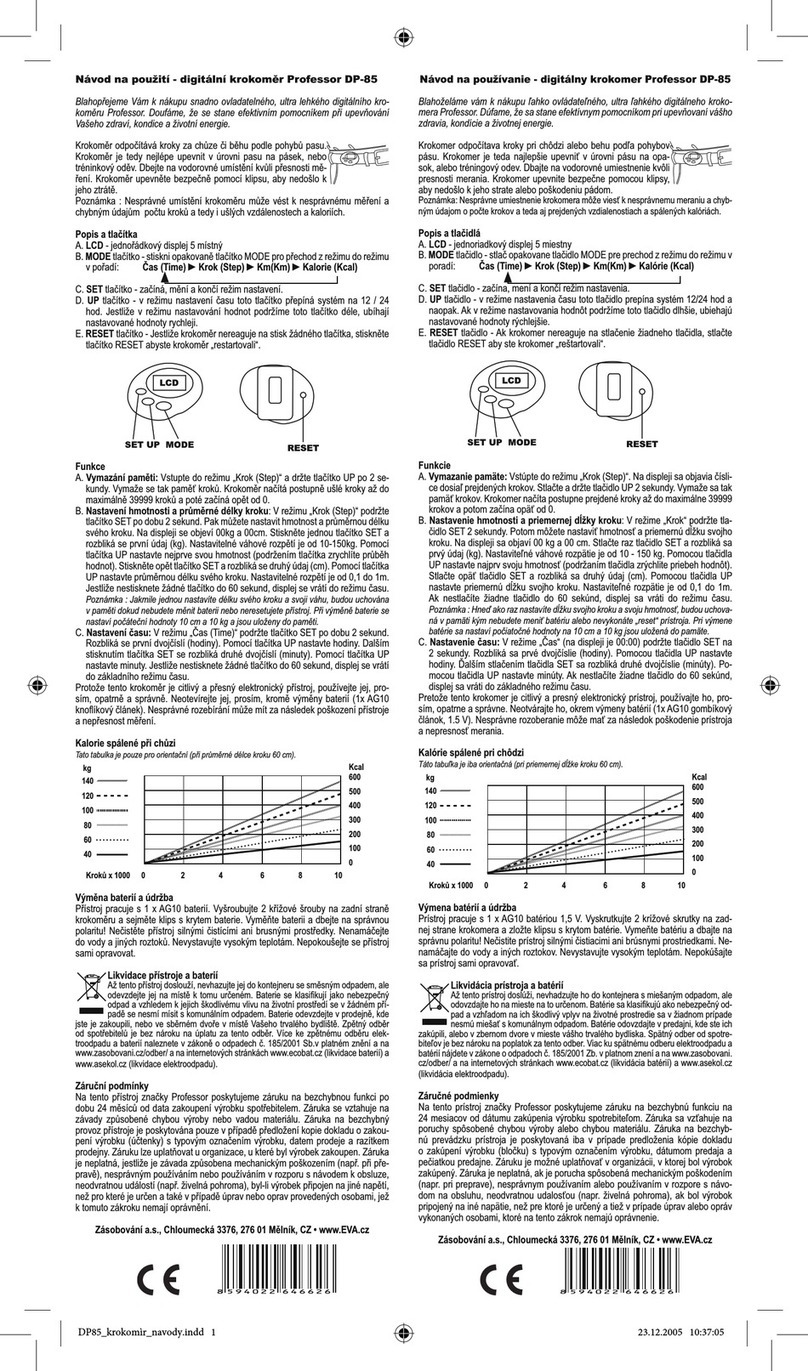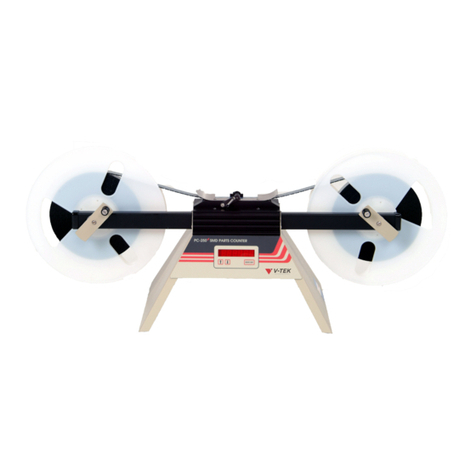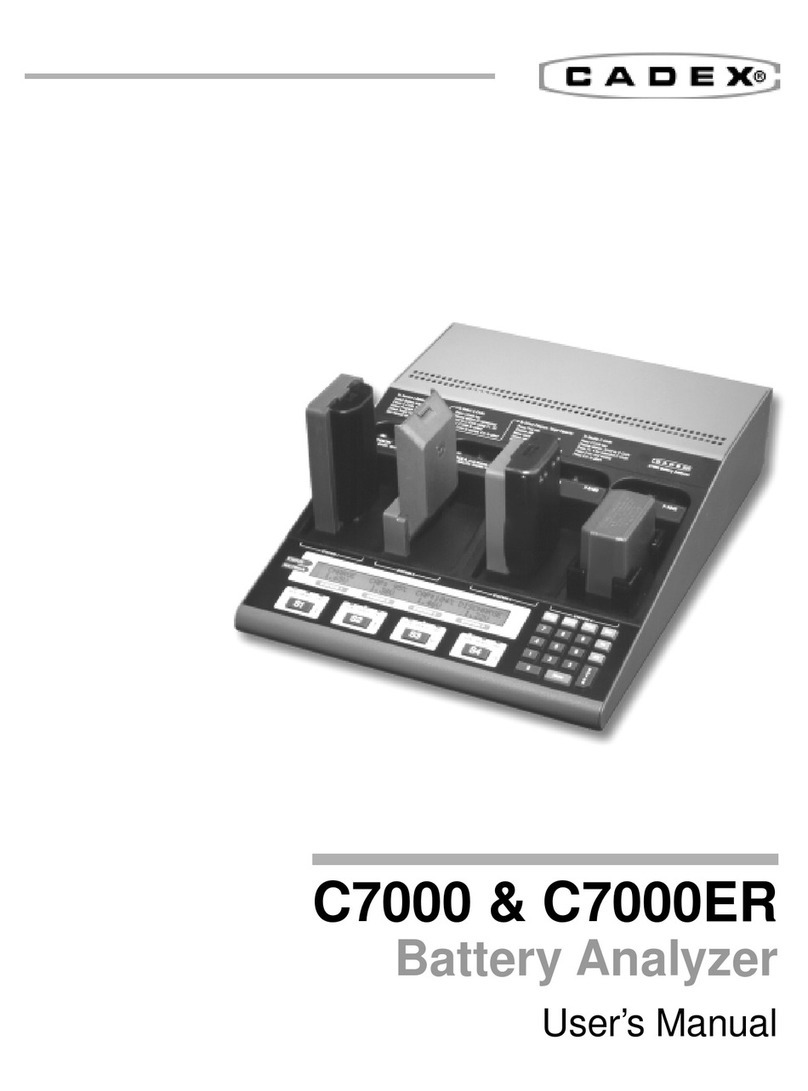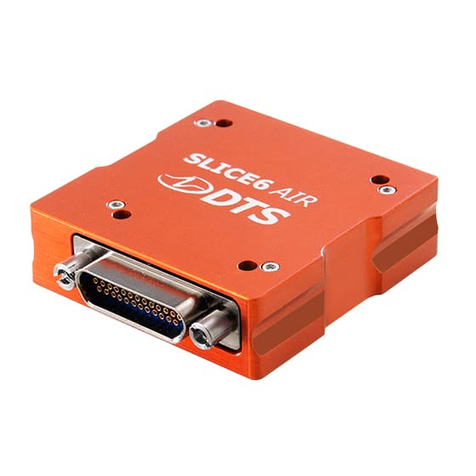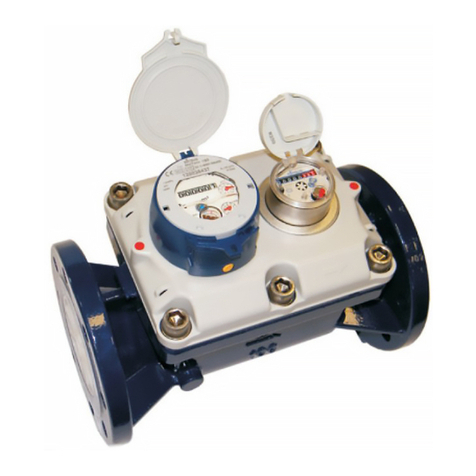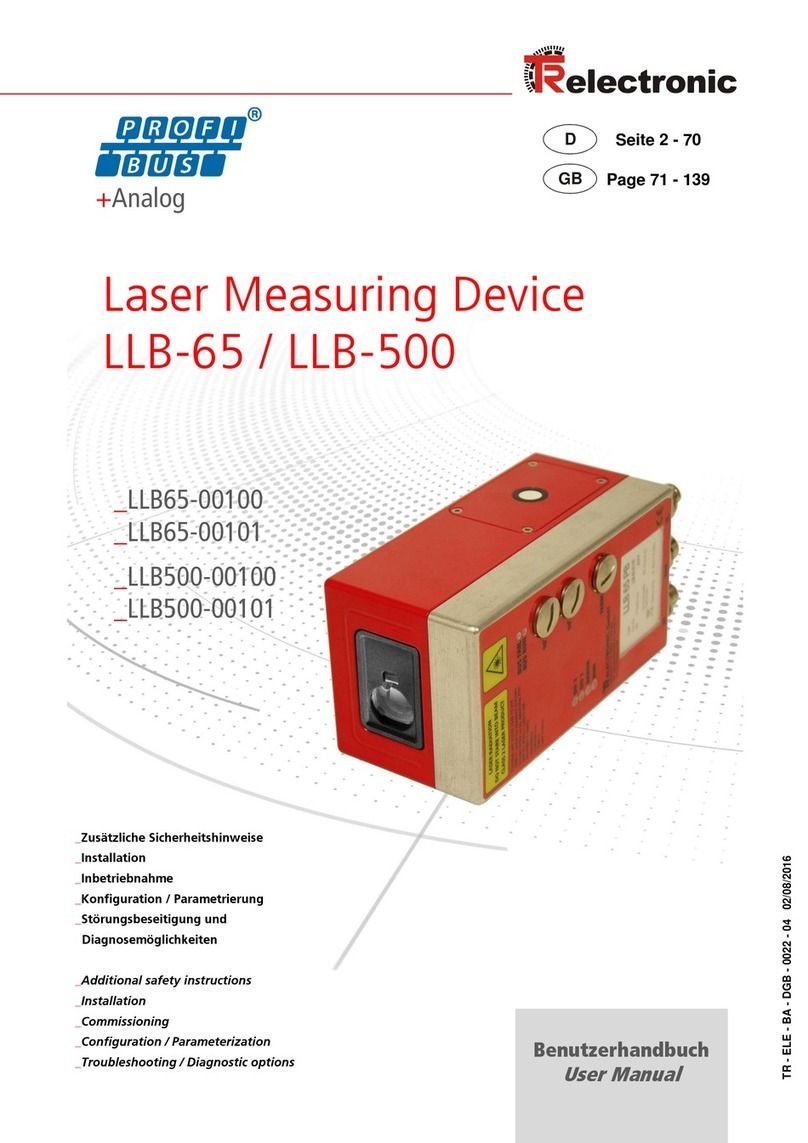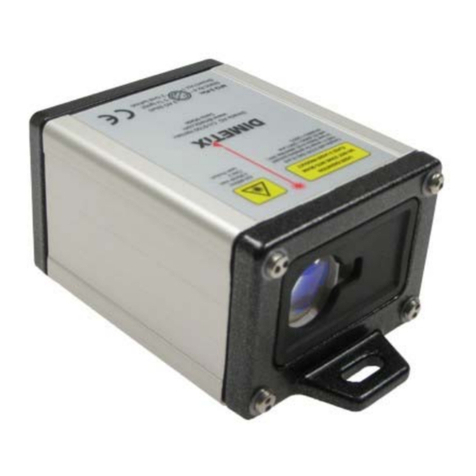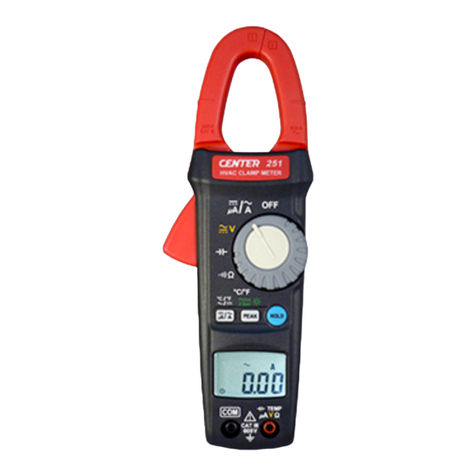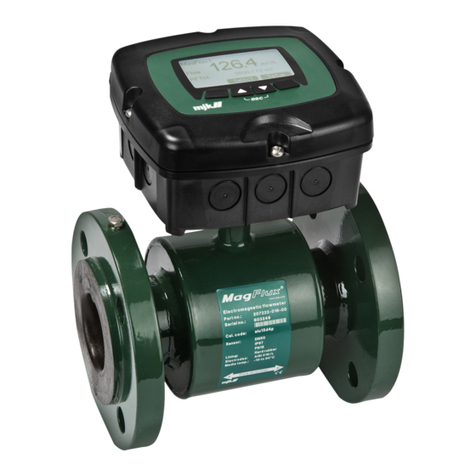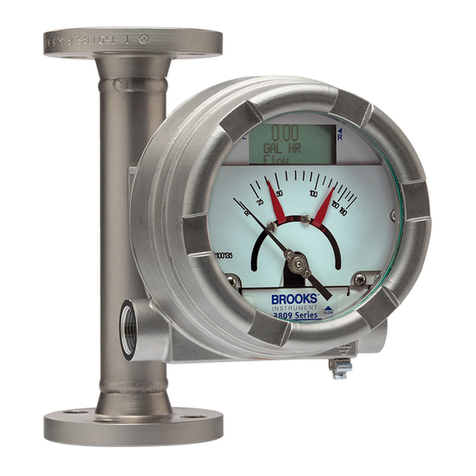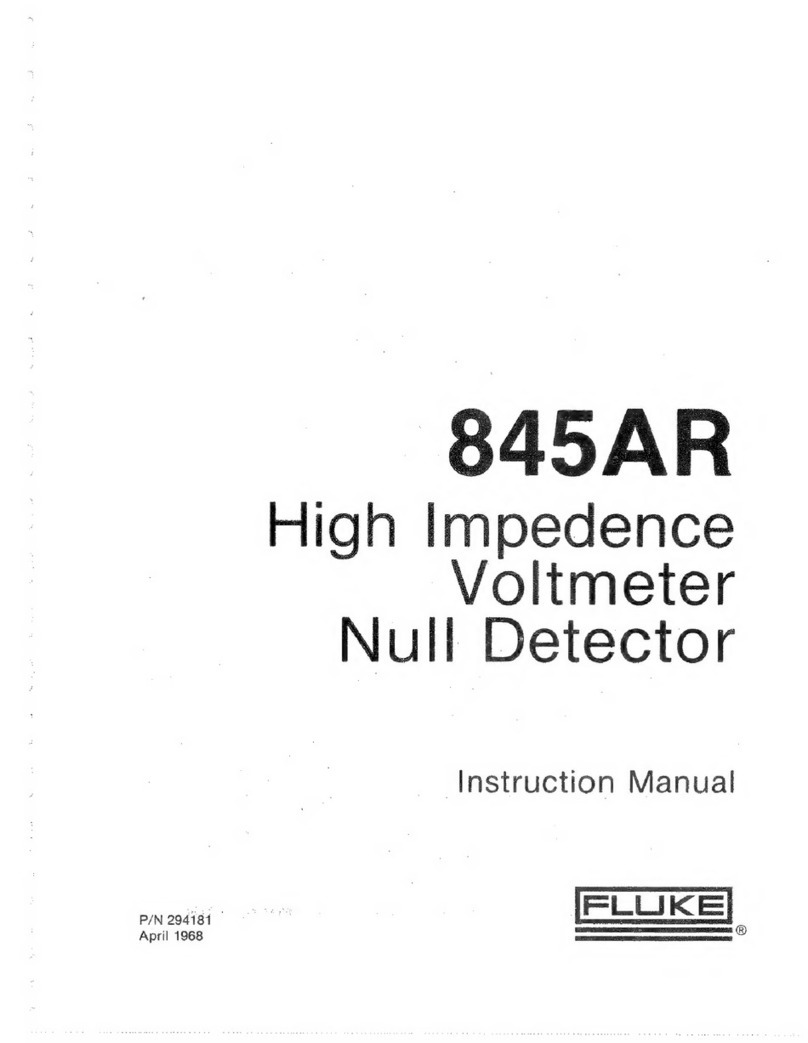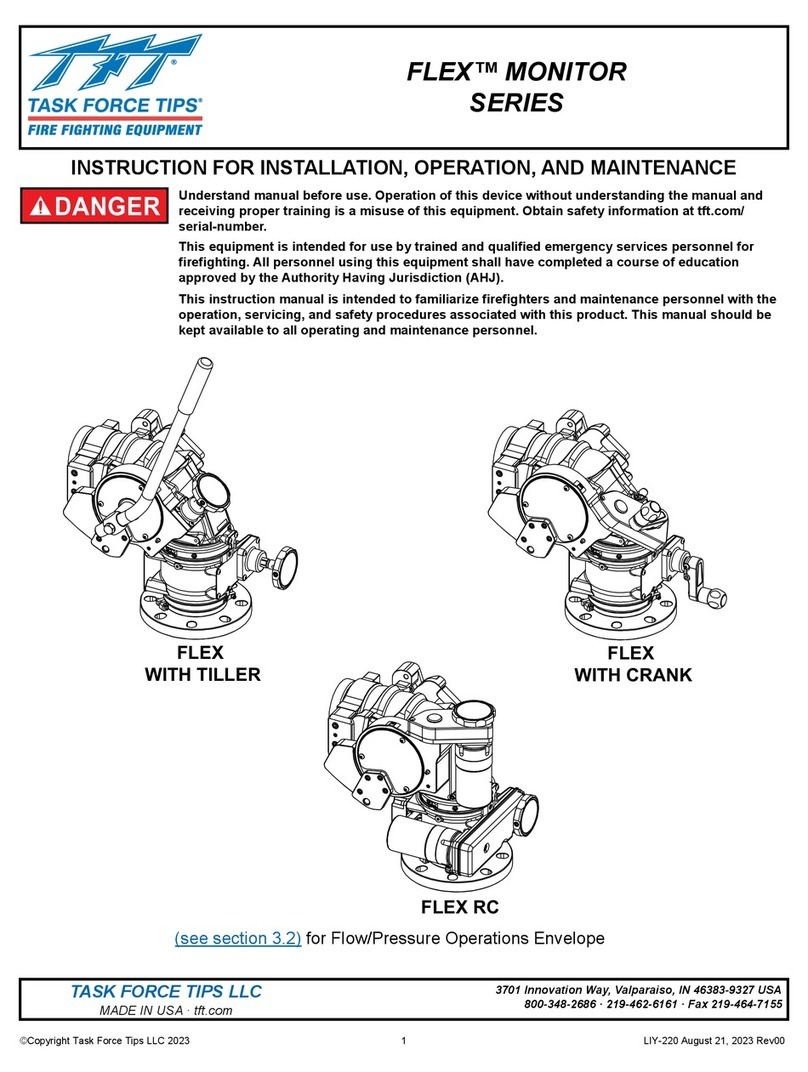Trio VT-121 User manual

AC
VOLTMETER
VT-121
VT-121F
VT-1215
INSTRUCTION
MANUAL
~TRIO

CONTENTS
1.
GENERAL
.................
· · - · · · 3
2.
FEATURES
.........
.
..
. . . . · ·
.···
3
3.
SPECIFICATIONS
..........
.
......
4
4.
CIRCUIT
DESCRIPTION
.............
5
5.
FUNCTIONAL
CONTROLS_
...........
9
6.
OPERATION
....................
· 10
7.
APPLICATIONS
...................
13
8.
MAINTENANCE
...............
• . · ·
15
9.
ALIGNMENT
.....................
15
10. CAUTIONS FOR
USE
....
.
.......
· · ·
17
11. PARTS
LIST
.....................
18
12.
P.C.
BOARD (X65-1210-00)
...........
26
13. SCHEMATIC
DIAGRAM
.............
27
2

l.GENERAL
Your
TRIO'S
Electronic Voltmeter, Model VT-121,
is
a
voltmeter
of
absolute-mean value indication
type
capable
of
measuring
AC
voltages from
100
JJ
V
to
300
V
in
the
frequency range as wide
as
5 Hz
to
1 MHz on root-
mean-square value scales. (The measurable voltage range
of
the
F version
is
150
JJ
V
to
500
V.)
Your
VT-121
is
available
in
a variety
of
applications as it
is
highly
sensitive and responds accurately
to
given voltages
in
such a wide frequency range.
For
use on production
lines, it can be controlled by a remote control device
(option).
This manual
is
prepared
in
common
to
the
three
version
of
the
Model VT-121, major differences
of
which are as follows.
VT-121: 1
mV
maximum sensitivity
and
BNC
input
and
output
connectors.
VT-121 F:
VT-121S:
1.5 mV maximum sensitivity and BNC
input
and
output
connectars.
1 mV maximum sensitivity and dual
input
and
output
connectors.
2.FEATURES
a.
All solid-state circuit provides a highly stable opera-
tion,
reduces warm-up
time
and saving power.
b. Dual power differential
input
amplifiers used
in
the
entire circuit provide a high reliability and
good
characteristic
of
restoration from possible saturation
due
to
excessive inputs.
c. A large-sized Taut-band meter has a high sensitivity
and reliability.
d.
The
number
of
adjusting trimmers are minimized
with
the
use
of
the
amplifiers which are precisely
calculated
in
the
open loop gains and are negative-
biased
through
metal-film resistors as accurate
as
1%.
The amplifier characteristics, therefore, are free
from
any secular change.
e.
The
input
resistance
is
as high as
10
Mn
in
all ranges
and its parallel capacitance
is
45
pF
or
lower.
f. The meter scales are graduated in
the
root-mean-
square values for sinusoidal waves. Also,
the
meter
has a dB
and
dBm scales convenient for measunng
relative values.
g.
The
output
terminal allows
your
VT-121
to
use
as
a
high-gain, wide-band amplifier.
h.
The
input
attenuators
are switched by a so-called
"logic control
circuit"
so
that
a desired range can be
selected with use
of
a remote control device (option).
i. A relay and
FET
switch for range selection, controlled
by
the
logic control circuit, provide higher reliability
than usual
rotary
switch direct switching.
3

3.
SPECIFICATIONS
Values brackets [ ]are for
the
F version
[Meter Section]
Measurable voltages:
1mV-300V
in
12 ranges: 1mV,
3mV, 10mV, 30mV, lOOmV,
300mV, 1V, 3V,
10V,
30V,
1
OOV,
and
300V
full scales.
[1.5mV-500V
in
12 ranges:
1.5mV, 5mV, 15mV, 50mV,
150mV, 500mV, 1.5V, 5V, 15V,
50V, 150V, and 500V full scales.]
dB:
-80-
+50dB
(OdB
= 1V).
dBm:
-80-
+52dBm
[-80-
+56dBm]
(OdBm =1mV, SOOn).
Error: Within ±
3%
of
full scale
at
1kHz.
Frequency response: ± 10%
at
5Hz-
1MHz,
Input
impedance:
±5%
at
10Hz-
500kHz
and
±2%
at
20Hz-
100kHz
as
referenced
to
1kHz response.
10Mn
± 5%, with less
than
45pF
parallel capacitance.
Durable
input
voltage: 500V [770V]
DC+
AC peak.
100V
DC+
AC peak
up
to
-10dB.
Stability:
Temperature
coefficient:
4
Within ± 0.5%
of
full scale for
± 1
0%
line voltage fluctuation.
±
0.08%fC.
Operating
temperature:
Relative humidity:
[Amplifier Section]
Gain:
Output
voltage:
Output
resistance:
Distortion:
Signal-to-noise ratio:
Frequency response:
[Power Supply Section]
60
dB ± 1 dB [51 dB ± 1
dB].
1Vrms ± 10%.
600n
± 10%.
Less
than
1%
at
full scale.
(Rated
by signal-noise ratio in 1mV
and 1V [1.5mV and 1.5V]
ranges.)
Over 40dB
at
full scale.
Within ±3dB
at
5Hz-
500kHz
.
Line voltage:
100,
120,220,
or
240V
AC
± 10%, 50/60Hz.
Power consumption: Below
5W.
Dimensions: 128(130)W_x 190(215)H x
238(260)Dmm.
Net weight:
[Accessories]
Power cable:
Input
cable:
Replacement fuse:
Instruction manual:
Values
in
(
protrusions.
2.9 kg.
JIS cable, 1 pc.
CA-41, 1 pc.
0.1A 2 pes.
0.2A 2 pes.
1 copy.
) include

4.
CIRCUIT
DESCRIPTION
In
studying
the
operation
of
each circuit
in
your
Model
VT-121, please refer
to
Figure 1,
the
"Block
Diagram",
and
the
Schematic
Diagram on
the
back cover.
• Outline
of
Operation
A signal voltage
to
be measured, which
is
input
from
the
INPUT
connector,
is
passed
through
the
First
Attenuator
and
is
converted
to
a low impedance
by
the
Impedance
Converter.
The
impedance-converted signal
is
further
attenuated
through
the
Second
and
Third
Attenuators
and
is
magnified by
the
Main Amplifier.
The
magnified
si
gfi
al is
~~d
to
:he
O
l!tC'
u
~
~
rnC'
Ii
f
ier
)
f1
0
the
Re
lat;
ve
Reference Control.
The
Output
Amplifier magnifies
the
signal 50-fold
and
feeds
to
the
OUTPUT
connector.
The
Relative Reference
Control
sets
the
signal level for relative reference.
The
Absolute-Mean Value
Detector
converts
the
referenced
singal
to
DC
current
in
proportion
to
the
absolute mean
value.
The
converted
signal activates
the
Meter.
The
Attenuator
Control encodes
the
signal led from
the
RANGE selector
to
generate an
attenuator
control
signal. This signal
controls
the
First,
Second,
and
Third
Attenuators.
The
Power
Supply
feeds
to
the
functiona
l
circuits±
5 V DC voltages stabilized
by
its
IC
regulator.
• Description
of
Functional Circuits
1.
First
Attenuator
A resistance divider
attenuator.
The
amount
of
atten-
uation
is
switched
in
two
stpes
by
relay
contacts:
0 dB
and
-60
dB.
2. Impedance Converter
A voltage follower circuit having a FET differantial
input.
This converts
the
First
Attenuator
output
signal
to
a sufficiently low impedance
and
feeds
to
the
Second
Attenuator.
3.
Second
Attenuator
A resistance divider
attenuator.
The
amount
of
atten-
uation
is
switched in
two
steps
by
relay
contacts:
0 dB
and
-30
dB.
4.
Third
Attenuator
A
1·e~
~
~'i.anL>e
d1\
1d€1
atte1'uatu1. I
h€
amuu1'\ 0i
a\te''
uation
is
switched in
four
steps by a FET swltch:
0 dB,
-10
dB,
-20
dB, and
-30
dB.
5. Main Amplifier
A wide-band, non-phase-inversi
on
amplifier having a
differential input. This has high
input
impedance,
low
output
impedance,
and
20-fold gain. The
output
signal level
is
20
mVrms
for
the
full-scale read
on
the
Meter.
6.
Output
Amplifier
A wide-band non-phase-inversion amplifier with a
differential
input.
This works stably even
for
capaci-
tive loads.
The
gain
is
50-fold
and
the
output
imped-
ance
600
n.
The
output
singal level
is
1 Vrms
for
the
full-scale read
on
the
Meter.
7. Absolute-Mean Value
Detector
An absolute-mean value
detector
comprised
of
a high
5

through-rate, high gain amplifier with a differential
input.
This has a very good linearity as negative-
biased by
the
voltage detected from
the
current
flowing through
the
Meter load. In switching, this
provides a sufficiently wide frequency band so
that
the
high-frequency
phase
correction
circuit
is
reset.
8. Attenuator Control
A logic control circuit comprised
of
a diode matrix
and
output
buffer. transistors. This encodes a 12-bit
signal
from
the
RANGE slector switch
to
6-bit
signals, which control
the
F:
·
.-st,
Second, and Third
Attenuators.
The
remote
control
connector
is
con-
nected
to
this circuit.
9. RANGE Selector
A
12-contact
rotary switch for selecting a desired
measurable voltage range. This feeds a signal corre-
sponding
to
the
range into
the
Attenuator
Control.
10.
RELATIVE REF Control
A
control
for
setting a reference voltage
in
measuring
a relative value with use
of
the
dB scales
and
the
like.
This
is
capable
of
varying
up
to
10
dB.
11.
Power Supply
6
A power source
of
converting
the
AC
1
OV
input
to
±5V
DC
outputs
to
supply. This has a
sit
icon diode
bt
idge
tot full-wave rectification, high-capacitance
electrolytic capacitors for smoothing, and an
IC
regulator
for
stabilization.

INPUT
RANGE
SELECT
@
1ST IMPEDANCE
2ND
ATT
~
CONVERTER
f-+
ATT
1----+
Q)
Cl>
Q)
ATT
CONTROL
@
3RD
OUTPUT OUTPUT
ATT
f-
MAl
N AMP
.............
....,
AMP
1--....._---+~-o~
@ @ @
RELATIVE
-REF
CONTROL
----,
@ <
1>>
RELATIVE
/j
REF
ABSOLUTE-
MEAN
VALUE
DET
(J)
METER
t---<--;
,....-{
ACIOOV/
120V
/220V/240V
n-----1
POWER
SUPPLY
@
t----+-
DC
5V
Figure 1 -
Block
Diagram.
50/60Hz
o-----1
GND
.,__,.
-ocsv
.__
___
_
7

Figure
2-
Front
Panel
View.
Figure 3 - Rear Panel View.
8

5.
FUNCTIONAL
CONTROLS
1)
Front
Panel (see Figure
2)
1. Power-on indicator
2. POWER: Power ON-OFF switch
3. RANGE: Measurable voltage range
selector switch
4. INPUT,
10Mn:
Input connector,
10Mn
impedance
5. OUTPUT,
600n
:
Output
connector,
600n
impedance
6. RELATIVE REF:
7. UNCAL:
8.
Relative reference control
Uncalibration indicator
Meter
2) Rear Panel (see Figure 3)
9. FUSE: Fuse holder
1
0. Power
connector
11. Line voltage selector
12. Remote control
connector
(option) blind.
3) Preset Controls
on
Side Panel (see Figure 4)
The following controls, placed
on
the
Main
PC
board
(X65-1210-00),
are
to
be preset
on
the
right-hand
side panel.
13.
TC101:
First
Attenuator
preset
trimmer
capacitor
14. VR 101: First
Attenuator
preset variable resistor
15. VR102: Meter Amplifier gain preset variable
resistor Figure 4 - Preset Controls
on
Side Panel.
9

6.
OPERATION
• Set-up
Values
in
brackets [ ] are
in
the
F version.
1. Press
the
POWER
pushswitch 2 in. The Power-on
indicator 2, a light-emitting diode, will light, indicat-
ting
that
power has been applied.
2. Plug
the
measuring cable into
the
INPUT connector
4.
3. Set
the
RANGE selector 3
to
"300V
[SOOV]
".
To
measure an
AC
voltage superimposed
on
a
DC
voltage,
be
sure
to
set
the RANGE selector 3 before connect-
ing
the
cable
to
a
point
to
be measured. Otherwise,
the
DC
voltage causes a high surge, which could burn
your VT-121
out.
4. Connect the cable
to
the point
to
be
measure.
5. Turn the RANGE selector 3 until
the
Meter pointer
swings over one third
of
the full scale.
6. Read the Meter.
10
0
-20
VT-121,
VT-1215
3
0
~dBm
-20
+2
VT-121F
10
20
30
® o o
rs
~dBm
Figure 5 - Meter Scale Graduations.

(1
)Voltage Scales
There are
two
black voltage scales: a scale A graduated
0
to
10
[0
to
15] and a scale B 0
to
3 [0
to
50].
When
the
RANGE selector 3
is
at
"1 V [1.5V]
",
for
example,
the
division
10
on
the
scale A indicates 1V
[the
division 15
is
1.5V].
At
the
"300mV
[500mV]"
position,
the
division 3 on
the
scale B indicates
300
mV
[the
division
50
is
500
mV].
Similarly,
the
other
RANGE selector positions show
their
full scale values.
(2)dB Scale
In
general,
the
dB
values are expressed
in
dBV which
is
a
unit
referenced
by
0 dB equal
to
1 V. (Note
that
the
F version has no
dB
scale.) The division
10
at
the
scale A corresponds
to
0
dB
on
the
red
dB
scale,
which
is
a voltage ratio scale. Since
the
RANGE
selector has 12 range positions
in
steps
of
10
dB,
the
voltage ratio
of
1 mV
to
300
Vis
110
dB
attenuation.
Assume a reference voltage level on
the
scale A be
1 V with
the
RANGE selector
at
"1
V",
a given
voltage can be read
as
low
as
-60
dB
(1
mV) by
turning
the
selector downward.
Further,
as
the
scale
A allows reading
to
-20
dB (0.1 mV), you can
continuously
measure
the
voltage ratio
as
high
as
-80
dB (0.1 mV
to
1 V). The read of
-80
dB means
a signal-to-noise ratio
of
around
20
dB. Also,
the
dB
scale allows
continuous
measuring up
to
+50
dB
(1
to
300
V)
by
turning
the
selector upward.
(3)d8m Scale
In
general, voltmeters have a reference level division
of
0 dBm equal
to
0.775
V
(1
mV power) induced
across a
600n
resistance load. Therefore,
the
red
dBm scale
is
available
to
measure a power level
referenced
to
0 dBm, with
the
impedance
of
the
given power circuit being
600n
pure resistance.
Where measured across specific resistance loads,
for
example, 1
Okn,
other
than
the
600n
load,
the
levels
are sometimes expressed
in
dBs.
• How
to
Use Remote Control
Availability
of
the
optional
Remote
Control
is
one
of
outstanding
features
of
your
VT-121 .
To
attach
the
Remote
Control, remove
the
blind plate
at
the
rear
of
your
VT-121. Install
and
plug
the
optional co'l-
nector
into
the
16-pin
connector
on
the
PC
board.
Wire it
to
the
multi-pin
connector
(plug) supplied
with
the
option.
Also, wire its pins
to
a RANGE
pushswitch
or
rotary
switch
and
to
a
PANEl-
REMOTE switch (toggle switch, pushswitch
or
slide
switch). These switches allows you
to
change
the
measuring voltage range on
your
VT-121 from a
distance place.
• How
to
Use Relative Reference Control
The
RELATIVE REF control
is
-
kept
at
"CAL"
in
general cases
of
reading calibrated, absolute values
on
11

12
the
Meter.
To
measure relative levels such as fre-
quency responses,
turn
the
control for uncalibration
state (UNCAL) until
the
reference level
is
set
to
a
desired value, for example, 0 dBm. This allows read-
ing
the
relative levels.
RANGE SELECTOR
r-----
------
1
CON
.I02
o------(1
t>-----<0}-+-----+-f-ol
-60
dB
0
.__PANEL-
REMOTE SWITCH
REMOTE
CONTROL
BOX
Figure
6-
Remote Control (Option) Wiring Diagram.
-SO
dB
-40dB
-30dB
-20dB
-IOdB
0
dB
+IOdB
+20dB
+30dB
+40d8
+SOdB
PSW
RMT
16
GND
I
PC
BOARD
L---------
VT-121 CASING
REMOTE CONTROL CONNECTORS (OPTION)

7.
APPLICATIONS
The
basic use
of
your
VT-121
is
to
measure sinusoidal
wave voltages
as
an
AC voltmeter. In
addition,
it
provides a wide variety
of
applications as described
below.
(1
)Amplifier Gain Measurement
Your
VT-121
is
capable
of
measuring
an
amplifier
gain, which
is
a signal magnification
from
point
A
to
B in Figure 7 with a signal
generator
connected
to
the
amplifier
input.
If
the
measured signal levels
at
points A
and
B are a
and
b dB, respectively,
then
the
gain
is
(b-
a)
dB.
Also,
the
method
is
applicable
to
negative-feedback
amplifiers;
that
is,
it
is
available for measuring an
open loop gain
of
each amplifier
circuit
with
the
negative-feedback signal leaves applied.
Further,
the
method
can be used for measuring
the
frequency responses
of
given circuits
by
changing
the
signal
generator
frequency.
As
an example, let us calculate
the
open
loop gain
(from
point
A
to
B)
of
the
negative-feedback ampli-
fier shown in Figure
8.
Assume
that
the
measured
level
at
point
A be
+1.5
dB
in
the
-60
dB range
and
that
of
point
B
-4
dB
in
the
+1
0 dB range.
The
gain
from
point
A
to
B
is
(+lOdB-
4dB)-
(-60dB
+ 1.5dB) = 64.5dB.
SIGNAL
GENERATOR
Figure 7 - Amplifier Gain Measurement.
SIGNAL
GENERATOR B
Figure 8
-Negative
Feedback
Amplifier Gain Measurement-
13

(2)Root-Mean-Square
and
Peak Value Calculations
1
~
Your VT-121, an voltmenter
of
absolute-mean value
indication
type,
reads root-mean-square values
of
sinusoidal wave inputs. Also,
it
deflects
the
pointer
in
proportion
to
the
absolute-mean value of a given
input
wave.
If
the
form factor
(=
root-mean-square value/absolute
mean value)
of
the
input
wave
and
the
crest
(=
peak
value/root-mean-square value)
are
known,
then
the
root-mean-square value
and
peak value can
be
cal-
culated as follows.
a.
Assume
that
the
meter
reads
v.
.
2{2
.
• Absolute mean value =
tr
v
~
0.9
v.
• Root-mean-square value = (Absolute mean value)
x (form factor).
• Peak
value=
(Root-mean-square value) x (crest).
b. For rectangular waves, their
form
factor
is
unity
(1) and
the
crest
unit
(1
).
• Absolute mean
value=
2
42
v
~
0.9
v.
11'
• Peak value =
0.9
v.
c.
For
sawtooth
waves,
their
form
factor
is
2/
-../3and
the
crest,/3.
• Absolute mean
value=
2
!{2
v
~
0.9
v.
7r
• Root-mean-square
value=
2t/2
X
_1_
V - 4
t{2
:...
1
04
7f
~
-
rr
.{3
v
-:
.
v.
•
Peak
value
= !
~
x.if:3v
= 4
f2
v;,
1.8
v.

8.
MAINTENANCE
(1)Removing
the
casing (see Figure 9)
1. Remove the six screws holding
the
casing
on
the
both
sides and
top
using a Phillips screw driver.
2. Widen
the
bottom
of
the 7-shaped casing a little
and pull it
up
for removal.
(2)Mounting
the
casing (see Figure 10)
1. Widen
the
bottom
of the casing a little when
covering it over the main body.
2. Fit
the
casing
PC
board retianer
to
the
PC
board
retainer
3. Alternately tighten the six screws for uniform
torque.
CAUTION: Excessive tightening could cause damag-
ing
the
screw
or
breaking the vinyl
leather.
Be
careful!
(3)Replacing
the
fuse
1. Open
the
fuse holder using a Phillips screw driver.
2. Replace
the
fuse.
CAUTION:
Be
sure
to
select the fuse of rated capaci-
ty.
For a
100
and
120
V
AC
lines, use a
0.2 A fuse; for a
220
and
240
V
AC
lines,
a 0.1 A fuse.
9.
ALIGNMENT
Values
in
brackets [ ] are
in
the
F version;
Your VT-121 was precisely preset
at
the factory. How-
ever, it can be aligned through
the
adjust holes located
on
the
right-hand side with leaving it housed
in
the
casing,
if
required.
In
realignment, first adjust
the
line
voltage
to
the voltage, use a precisely calibrated measur-
ing instruments, and proceed as follows (also, see
Figures 2 through 4).
1. Before turning
the
POWER
switch
"ON",
adjust
the
Meter zero-adjust screw until-the pointer correctly
indicates
"0".
2. Connect a voltmeter calibrator 1 kHz (or
400
Hz)
output
to
th~
INPUT connector 4.
3.
Set
the
voltmeter calibrator
output
voltage
to
30
mV
[50 mV] and set
the
RANGE selector 3 on
your
VT-121
to
the
"30
mV [50 mV]
"range.
4. Adjust VR102 until
the
pointer swings
to
the full
scale.
5.
In
turn, set the voltmeter calibrator
output
voltage
to
10 V [15
V]
and set the RANGE selector 3
to
the "1
OV
[15V]"
range.
6. Adjust
VR1
01
until
the
pointer swings
to
the full
scale.
7. Disconnect the voltmeter calibrator and connect a
wide-band signal generator
to
the
INPUT connector 4.
8.
Set
the
signal generator frequency
to
1 kHz and
set
the
RANGE selector 3 on
your
VT-121
to
the
"1V"
range.
15

9.
Adjust
the
signal generator
output
voltage until
the
pointer swings
to
the
full scale.
10.
Change
the
signal generator frequency from 1 kHz
to
50
kHz.
11.Adjust
TC1
01
until
the
pointer swings
to
the
full
scale.
12
Repeat Steps 2 through 11.
lf
CASING
MOUNTING
Figure 9 - Casing Removal. SCREWS, 6 PIECES
o o · o
Figure
10
-
PC
Board Retainer.

1
0.
CAUTIONS
FOR
USE
1.
Your VT-121
will
work just when the
POWER
switch
is
pressed
in. For accurate measurements,
wait
around five minutes
for
warm-up.
2.
Avoid
placing
your
VT-121 where magnetic field and
electric field
are
too
strong.
3. The
input
cable other than the supplied one should
be low-capacitance shielded cord, or coaxial cable.
4. The continuous maximum
input
voltage allowable
for
your
VT-121
is
80
Vrms
with
the RANGE
selector at
"-60dB"
to
"-10dB".
Full
care
should
be observed in measuring high voltages.
5.
Be
careful
of
a line noise and similar small noises
as
your
VT-121
is
a highly sensitive voltmeter.
6. Do
not
leave
your
VT
-121
at any
of
high temperature
and
humidity
places
for
a long period
of
time.
7. The VT-1215 version, unlike the other
two,
is
equipped
with
input
terminals in place
of
the con-
nector.
Be
careful
of
the terminals
as
these could
induce external hum and noises.
17

11.PARTS
LIST
of
VT-121
CIRCUIT NO. PARTS NO. DESCRIPTION REMARKS
A01-0818-12
Case
Al0-1417-12
Chassis
A20-2715-32 Panel
A21-0820-08 Ornamental panel F version
A21-0821-08
Ornamental panel S version
A21·0819-04
Panel
807-0190-04
Escutcheon
831-
0708-05
Meter
831-0709-05
Meter F version
840-0765-14 Name plate
840-2723-04
Name plate
(VT-121)
840-2724-04
Name plate
(VT
-121 F)
840-2725-04 Name plate
(VT-1215)
841-0702-04
Name plate (power source)
850-2842-00
Instruction
manual
E03-0201-05 Power connector
E04-0251-05 Receptacle.
type
8NC
E04-0253-05 Receptacle.type BNC
E08-1 081-05 Voltage selector. receptacle
E
09-0681-05 Voltage selector, plug
E21-0209-13 Pair
terminal
S version
E23-0513 -05 Grounding lug
E23-0015-04
Grounding
lug S version
E30-1818-05 JIS cord
E31-0535-05 Lead
wire
with
connector
E31-0533-05
Lead
wire with connector
F05·2012-05 Fuse
0.2A
18

CIRCUIT
NO. PARTS NO. DESCRIPTION REMARKS
F05-1 012-05 Fuse
0.1A
F
11
-0914-04 Shield
case
F15-0703-04
Blind
plate
F1
9-0703-04
Patch
H01-2826-04
Packing
case
H10-
2802
-
02
Packing
material,
foamed styrene
H20-1703-04
Protection
cover
H
25
-
0029-04
Polyethylene
bag
J03
-
0003-04
Rubber
leg
J1
0-0038
-03 Bezel
J1
0-
0042
-03
Be
ze
l assembly
J1
0-004
3-03
Be
z
el
assembly F version
J1
0-0044
-03 Bezel assembly S versi
on
J13-0033-15 Fuse
holder
J21-2840-04
P.C
. Board retainer
J21-2842
-04
Diode
mounting
hardware
J21-2843-04
Meter
mounting
hardware
J21 -
2844
-04
Switch
mounting
hardware
J42-0038-04
Hole
bush
J61 -0049-05 Cable
wrapping
band
K01 -
0058
-
25
Grip
K21-0812-04
Knob
30q,
K
21-0306
-
04
Knob
17
rt>
K21-
0807
-
04
Knob
L01-9086
-
05
Power
transformer
R01 -1501-05
Variable
resistor
with
switch
19

CIRCUIT NO. PARTS NO. DESCRIPTION REMARKS
•.
so
1-1505-05
Rotary
switch
$40-2506-05
Push
switch
Light-emitting
diode
X65-1210-00 Main
unit
X65-1210-01
M~in
unit
F version
E30-18:Z4-05
Input
cable CA-41
X67-1 000-00
Input
cable
CA-36
S version
20
This manual suits for next models
2
Table of contents
Other Trio Measuring Instrument manuals
